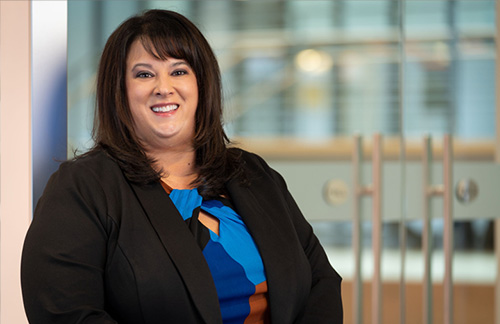Sustainability
Driving More Sustainable Operations
There are many ways innovative manufacturers advance sustainability. Timken contributes to a more sustainable future by creating eco-friendly and efficient products, and by investing in new technologies that reduce the impact that making those products has on the environment.
The company’s solutions help harness new types of renewable energy and make electric vehicles more efficient. And with defined goals and transparent reporting, Timken elevates sustainability in the equipment, processes and supply chains that make those solutions possible.
Timken has a target to reduce its aggregate Scope 1 and Scope 2 greenhouse gas emissions intensity by 50% by 2030*. Tim Graham, vice president of bearing operations and Jamie Milobar, manager of global environmental, health & safety, share how the company’s investments and eco-friendly mindset will help achieve the goal.
 |
 |
| Tim Graham, Vice President of Bearing Operations | Jamie Milobar, Manager of Global Environmental, Health & Safety |
Why is sustainability so important at Timken?
Milobar: Along with safety, sustainability is one of our top priorities because it’s the right thing to do, and it’s important to our employees, customers and communities. For 125 years, we’ve built our business on innovating products that improve mechanical system efficiency and sustainability. Everything we do to improve the sustainability of our operations is an extension of that.
“For 125 years, we’ve built our business on innovating products that improve mechanical system efficiency and sustainability.”
Jamie Milobar
Manager of Global Environmental, Health & Safety
Manufacturing is an energy-intensive industry. How does Timken manage its demand and supply of energy for greater sustainability and lower greenhouse gas emissions?
Graham: We have a strategic energy program that includes making capital investments to enhance manufacturing efficiency. These improvements are often recommended by our employees, like using heat generated by air compressors to warm our Sosnoweic, Poland, facility during cold months. Local improvements add up to large sustainability gains globally.
Milobar: We’re also installing solar power capacity at locations where it makes sense. We recently installed solar panels at facilities in Europe and Latin America after having success at our locations in India. Strategic purchase-power agreements with utility partners also help us leverage cleaner energy options through wind and solar sources, especially in Asia and Europe. It’s already helped us reduce greenhouse gas emissions intensity by 25% as of the end of 2022 — half of our 50% by 2030 goal.
How much more renewable energy is Timken using than it did just five years ago?
Milobar: We’ve increased our renewable energy sourcing tenfold since 2018 and received nearly 171,000 gigajoules of energy from renewable sources in 2022. Many of our largest facilities, which also have the greatest energy needs, are the biggest renewable energy users.
Graham: We’re extremely proud of our facilities and teams who have been early adopters and champions of renewable energy. In Jamshedpur, India, our team recently earned a Golden Peacock Award for Energy Efficiency and a Sustainable Organizations recognition from the Economic Times. In Pegnitz, Germany, where we produce automatic lubrication systems that support wind energy systems, our Groeneveld-BEKA team is innovating with biomass energy. We’re proud of these successes and expect to double our 2024 renewable energy usage from 2022 levels.
How does Timken plan to drive down emissions even further?
Milobar: We continue to find opportunities in our metrics analysis that help guide purchasing decisions and our own sustainability excellence. About 70% of our main suppliers, who make up 80% of our direct material spend globally, actively pursue sustainability programs. Supplier sustainability is a key factor in our sourcing strategy.
Graham: We also track environmental key performance indicators (KPIs) for all facilities. They give us more targeted insights into our global CO2 emissions intensity and renewable energy metrics and help us drive better informed sustainability initiatives that benefit our employees and the communities where they live and work.
Timken optimizes its product design, operational processes and supply chain globally to enhance sustainability. Learn more about the company’s sustainable engineering process and how it limits the environmental impacts of packaging.
*2018 baseline, total company revenue as the normalizing factor for intensity.
Last Updated: 2024/03/4
Published: 2024/02/21
